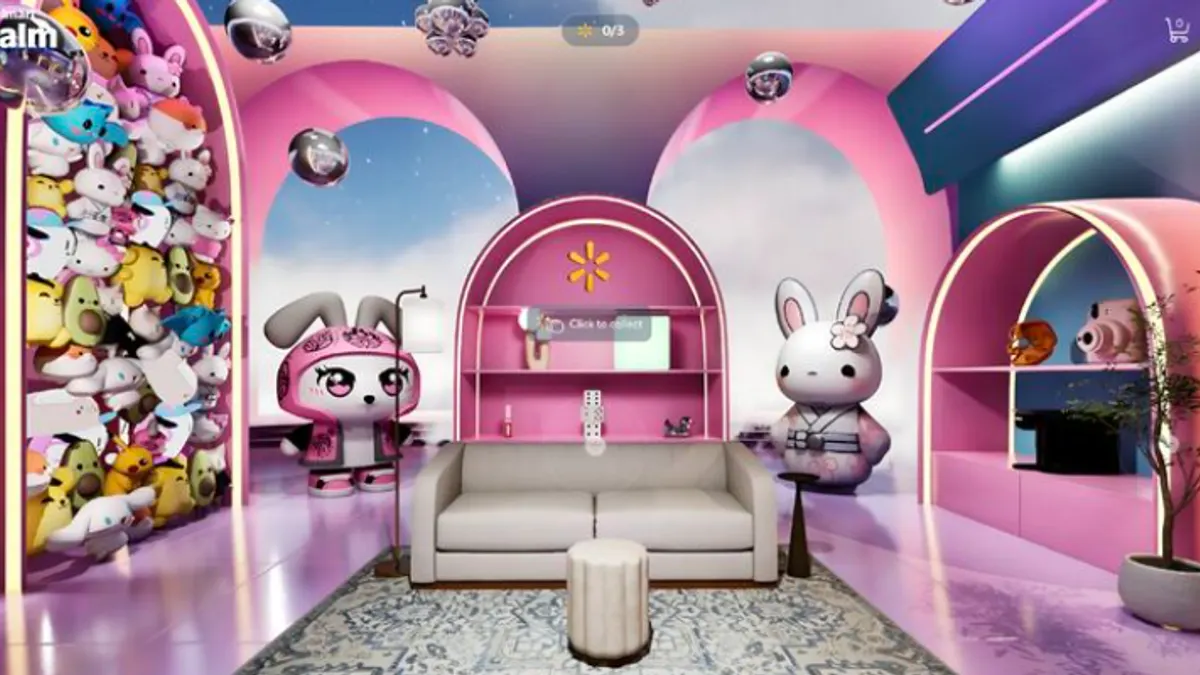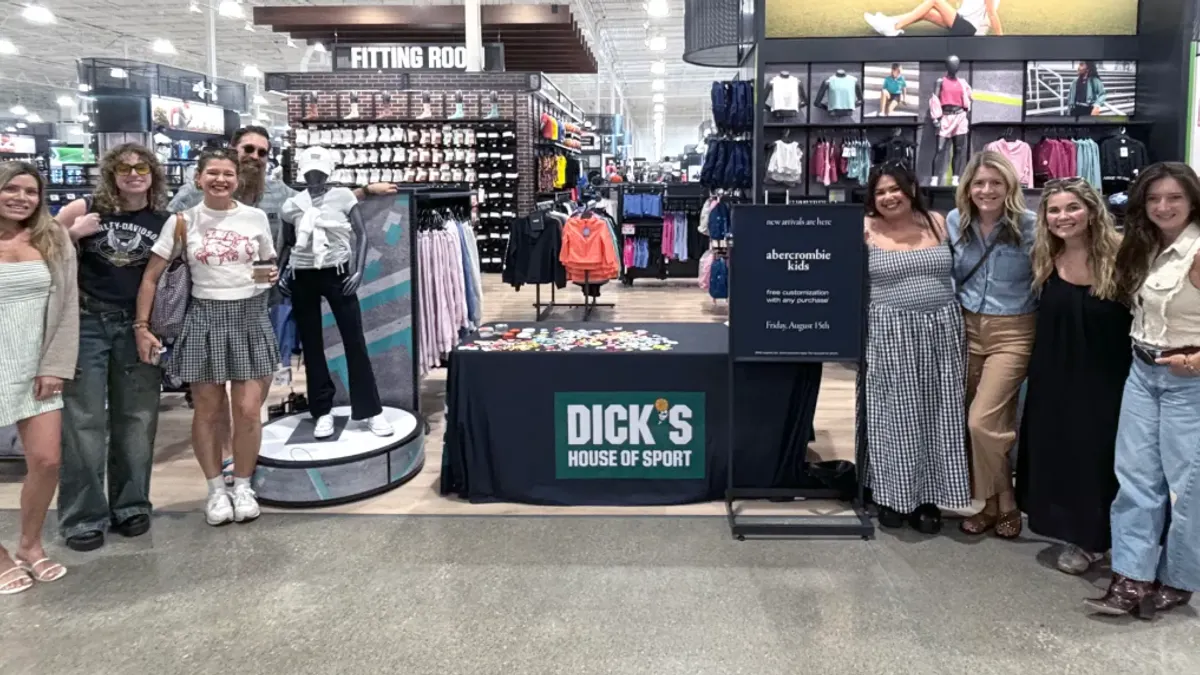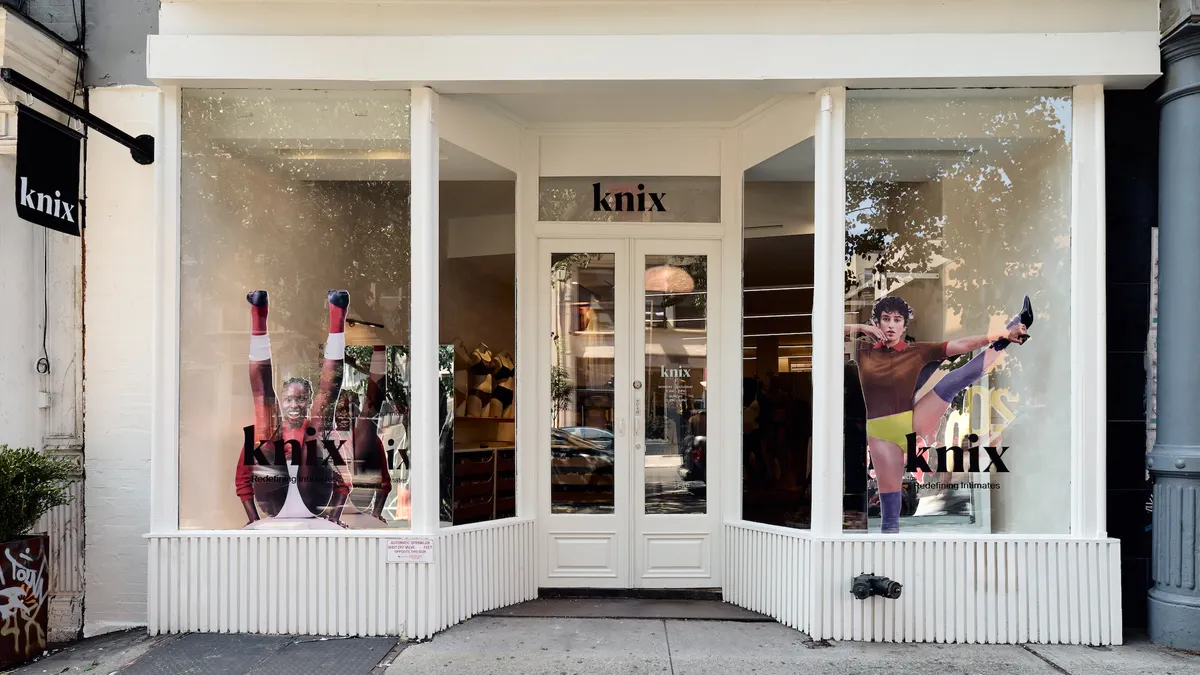Every week, Monique Geter follows her committed routine to tracking new deals. Sundays are for CVS and Walgreens while Wednesdays are for Harris Teeter and Food Lion. Swiping through Instagram, Facebook Groups, deal marketplace Flipp and an occasional newspaper, Geter spends hours deal-searching online to please her loyal followers who depend on her routine summarization of how to earn the lowest prices at popular discount retailers.
Geter is a Gen Z, college graduate and small content creator part of the online couponing community. She runs an Instagram account (@momoneymosavings) posting her favorite weekly and daily deals she’s researched.
Monique isn’t the only one with a deal-hunting routine. Though print coupons may be mostly a thing of the past in a now digitally focused world, the search for saving money has transitioned online, giving rise to a digital couponing community. Content creators like Kiersti Tork (812K followers) and Mrs D Coupon Queen (74K followers) post consistent opportunities to save for their large followings.
Discount retailers like CVS, Dollar General, Family Dollar, Dollar Tree, Walgreens and others frequent influencers’ deal roundups. During a time of continued economic inflation, perhaps that makes sense. According to data from Numerator, Walgreens is the top promoter in the U.S. for consumer packaged goods (what consumers generally use coupons for), in all regions.
Retailers are catering to digital couponers by developing mobile apps dedicated to hosting coupons and notifying customers of deals. Discount retailers like Dollar General, Dollar Tree and Family Dollar update their mobile apps frequently with weekly and daily deals for shoppers. These deals help inform what influencers then share with their own communities on Instagram, TikTok, Facebook and more.
In the internet era, online communities are helping each other find discounts at already cheap stores. Here’s a look at how they’re influencing shoppers' minds, carts and why deal hunting is still relevant.
A brief history of extreme couponing and the extreme couponer in 2024
The digital coupon found on Instagram, TikTok or a retailer’s mobile app serves as the modern-day iteration of coupon clipping in newspapers, coupon stacking, dumpster diving and similar behaviors as expressed on shows like TLC’S Extreme Couponing. Though the show is dramatized for viewers and couponing has changed drastically since the 2010s, the mission to find the cheapest price remains.
Best friends Heather Wheeler and Joanie Demer, co-CEOs of the Krazy Coupon Lady, were there for the conception of the popular reality show and extreme couponing as a behavior.
Wheeler said she first heard of a, “crazy way that people were using coupons to get free stuff at the grocery store” online before social media really existed.
“The internet was so different back then that it was hard to get information about it,” Wheeler said in an interview. “And I wasn't sure if it was going to work. I wasn't sure if the store was going to get mad at me, like, I didn't know. So I convinced Joanie to come. I said, ‘I've done all the work, just come and try this with me and be there, you know, if I get kicked out of the store, we'll have a funny story for the rest of our lives, right?’”
Demer reluctantly joined her best friend to see the deals go through, their plan working to everyone's surprise and the store's cashier, “as obsessed as we were with how much money we were able to save.”
Shortly thereafter, the two founded their blog, in 2009. First shared to family and friends, Wheeler and Demer featured the deals they were using and how to earn them. The blog quickly grew a following in just a few months, averaging over 1,000 daily visitors to the website in April, Wheeler said.
KCL’s blog shares at least 100 deals daily. “Most importantly, we still have human shoppers — not robots or algorithms — writing every single one of our deals. Every coupon on our website has been hand-vetted, because no one wants to waste time with a bot that's guessing random promo codes,” its website reads.
“We didn't have social channels,” Wheeler said. “It was just people finding us and finding value in what we were sharing. So at that point, we decided to get serious about it and really come up with a plan for the content on the site.”
Though KCL began in a different era of couponing, now a lot of it is happening on YouTube, Instagram, TikTok and all over social media.
Couponing influencers post deals, alongside advice to help novice couponers. Tips and tricks for first-time couponers might include advice to “do your own math” before checking out, to price match with other stores for the cheapest option and a reminder that prices may vary by store location. Posts range from how to get a full basket of products for a certain price, rebates, weekly deals, freebies, buy one get one offers and more.
Geter got her start at couponing during the COVID-19 pandemic, a moment in history where money was tight, many pursued new hobbies and free was bountiful. She found relevant resources online through Instagram and private Facebook groups where she learned as much as she could from experts on how to coupon modernly and properly.
“I do think that couponing, it's extremely easy,” Geter said. “But you definitely need to put in a little work to get the deals.”
Geter said she finds her deals partially through online marketplace Flipp. Flipp curates local promotions, working with brands and retailers to showcase their promotions on its app. Once she’s gathered her deals, Geter creates graphics for her social media posts and drafts a caption, publishing to over 8,500 followers.
A survey conducted by KCL among its roughly 20,000 users in January confirms that more couponers are moving online. Among other key findings, 90% of the company’s readers prefer digital coupons, “highlighting the importance of digital platforms for engaging today’s tech-savvy shoppers,” per the customer insights report emailed to Retail Dive.
As content creators and influencers populate the online couponing space, KCL has continued to remain a leader throughout. The Krazy Coupon Lady has grown to amass 599K Instagram followers, 474.3K TikTok followers and 194K YouTube subscribers alongside an app available on ioS and the Google Play store.
Couponing isn’t as outdated as the television show associated with the financial hobby. As retail has managed to digitally transition in multiple ways, so has the art of saving money. But what does this mean for retailers, especially the discount stores most commonly featured across social media? And if customers are searching for deals at already heavily discounted stores, what does this say about the macroeconomic environment?
The economics of couponing
From a retailer’s perspective, coupons are useful because they can drive a short-term boost in sales and customer loyalty, Katherine Black, a partner at global strategy and management consulting firm Kearney leading food, drug and mass market retail, said in an interview. “Items like toilet paper, paper towels and cleaning products are typically discounted or offered at a deal for a bundle. Coupons are used first to attract customers to the store and retailers still want shoppers to purchase items beyond the discounted product.
“It brings you in in a way that would get you to come back more and more,” Black said.
Over time, couponers may create a stockpile, a common phenomenon in the community after months of practice and finding bundled deals. Typically a dedicated shelf or pantry in a home or garage, a stockpile is the overflow of items collected after snagging a deal, since many offers are in bulk.
Geter’s stockpile consists of items she’s found easier to coupon, such as paper towels, toilet paper, laundry detergent, body wash, toothpaste, toothbrushes and more. In Geter’s experience, the most difficult essential items to coupon were trash bags and dishwashing pods.


Like TLC’s couponing series suggested in some episodes, extreme couponing can in some cases lead to hoarding. So, are customers really saving money through consistent couponing?
“You get a bit of a hit from finding the deal, that's the payoff,” Black said. “So it's not surprising to see stockpiling taking place or … getting things you don't necessarily need. It's the same thing when you go to a store and you get a free sample. That's another sort of trigger that rewards the customer. You may not even ever use the free sample or whatnot, but it's giving you a positive reinforcement. We see that a lot.”
High inflation levels continue to persist. The consumer price index rose 2.9% over the past 12 months ending in July, per recent numbers from the U.S. Bureau of Labor Statistics. The index for food increased 0.2 percent in July, similar to June. Despite high prices, sales in the segments covered by Retail Dive rose 6% year over year in July, “evidence of how resilient consumer spending has been despite challenges such as high inflation and high interest rates,” Bankrate Senior Industry Analyst Ted Rossman said in emailed comments at the time.
“I personally believe that in this day and age, couponing has gotten a little bit harder because of inflation,” Geter said. “Prices are continuing to go up but the coupon values are really low, like 50 cents off an item. And they're not increasing the value of the coupon so it's harder to build my stockpile. I've kind of been selling my stuff out also to just make more money. Because, you know, in this day and age we’re broke.”
KCL found that its shoppers are making grocery lists before heading to the store to avoid unnecessary spending. Forty-two percent of respondents last year reported using a list to stick to budgets, up by 200 basis points compared to a November 2022 survey.
Also to save money, KCL customers are turning to private labels and letting go of nonessentials, with 30% of shoppers reporting making those changes.
When it comes to effective promotions, 90% of respondents in January said the most engaging deals include percentage discounts, deals offering free items on minimum spends (71%) and specific dollar-off discounts (70%). KCL subscribers’ top three preferred retailers are Walmart (82%), Amazon (76%) and Dollar Tree (61%), “reflecting a diverse range of retail preferences that align with value-seeking behaviors,” KCL said.
Dollar stores are another frequent stop preferred by couponers, but the value proposition they offer is changing. Uniquely, dollar stores have taken a turn and begun to offer new assortments at higher price points. After an initial test, Dollar Tree in 2021 started rolling out higher prices at select legacy stores and Dollar Tree Plus stores, implementing items higher than $1. The company has since rolled out groceries up to $5 and decided in March to raise its highest prices to $7 at over 3,000 stores.
“It’s very hard these days to find something that’s really $1."

Julio Sevilla
Associate professor at the University of Georgia
Dollar General has also continued to expand its offering to include fresh grocery items and produce and other shelves labeled with higher price points. Items priced above a dollar are often clearly marked or have a special section dedicated to them.
Julio Sevilla, an associate professor in the department of marketing at the University of Georgia's Terry College of Business, said that discounted stores expanding their offerings and price points is aimed at capturing customers' spend as they search for cheap prices, but it has also caused some shoppers to lose interest in those stores.
Still, Sevilla asked, “why should they restrict themselves to only one dollar?”
“It's very hard these days to find something that's really $1,” Sevilla said. “So it's a matter of extending their market, being able to sell more things and sometimes sell to more consumers, right? So I think it makes sense to sell more things and to offer those coupons. Why should they limit to only 99 cents?”
‘You don't have to subscribe to the Sunday paper anymore’
As dollar stores and retailers alike continue to adjust their prices in hopes of a broader customer base, this could be a turn off for couponers interested in snagging a deal. But do discount retailers care about retaining the couponing community?
When asked about its coupon strategy, selection process and reaction to online deal-hunting communities, Dollar General referenced its motto to “Save Time. Save Money. Every Day." The company also mentioned its digital tools aimed at helping customers save money like its weekly ad, digital coupons, cart calculator, shopping list, store locator, digital wallet and DG Cash Back.
Black said that in most cases, discount retailers don’t want to encourage extreme couponing, saying they’re a difficult community from which to earn money.
“So the extreme couponers will go in and they'll find multiple things, multiple deals, multiple coupons, or some sort of extreme offer,” Black said. “They'll oftentimes go in, buy that item or buy other items that are similar to their profile, not fill up their basket with other stuff and not necessarily build trip loyalty. They won't necessarily come back to that store again and again, because they're hunting for the newest deal.”
Still, some influencers do have relationships with retailers. Many retailer-influencer relationships are clearly marked with hashtags or notes of a sponsorship. There may be a unique discount code pertaining to the creator in which they earn a percentage of sales each time it's used. Other avenues used to collect money in these creator deals are through affiliate links, photo advertisements or sponsored posts.
"It's absolutely easier to coupon today than it was 10 years ago."

Heather Wheeler
Co-CEO of the Krazy Coupon Lady
When asked, Geter herself has yet to experience being approached by any retailers to promote a specific deal, though she has been offered to promote a product in exchange for a coupon. She has seen other couponing creators publish sponsored posts and retailers collaborating with influencers to promote a coupon.
The value-driven motives of everyday shoppers is much more intensified in a community that boasts who can save the most money, according to Sevilla, and the penny-pinching rationale of digital creators in search of online fame doesn’t always side with brands and large corporations.
“They do need to be careful of their image and to continue to get those value-oriented consumers, to offer them a new concept to target them — and the digital world really offers them that opportunity,” Sevilla said. “They get the people that don't necessarily only want $1 stuff, so those are new consumers. But then they retain some of those value-oriented consumers, targeting them online. So I think it makes sense for them if they handle it well.”
Wheeler of KCL said she’s personally seen a huge push towards retailer’s loyalty programs, which are catering to deal hunters.
“So there's a lot of coupons available there as well…I think we're going to continue to see more digital savings options,” Wheeler said. “I know there's a few companies working on solutions for universal coupons or just more mobile offerings, so it's absolutely easier to coupon today than it was 10 years ago. You don't have to subscribe to the Sunday paper anymore. You still can and there's still savings in the Sunday paper but you absolutely don't have to the way that you used to.”
Wheeler mentioned that couponing has increased in accessibility and can be done by all customers at different levels of deal-hunting knowledge. The inclusion of self-checkout is another way couponing has gotten easier for the customer, eliminating “in-store intimidation,” per Wheeler, from possibly holding up a line when presenting various coupons.
How much shoppers can really save is more retailer-led now, since businesses don’t want to encourage excessive couponing. It’s not as easy to stock up on one item, according to Wheeler, since retailers now understand that method of taking advantage of paper coupons. But that doesn’t mean couponing has lost its allure for shoppers.
“If you could get your hands on 10 Sunday newspapers … you could go buy 10 of the same products and you get that discount,” Wheeler said. “It's much harder to do that. So you're not able to stock up in that kind of extreme way that we used to see, but I don't think you need to. I don't think it's a huge deal. You can still buy one or two or three items and you can still save a lot of money.





















